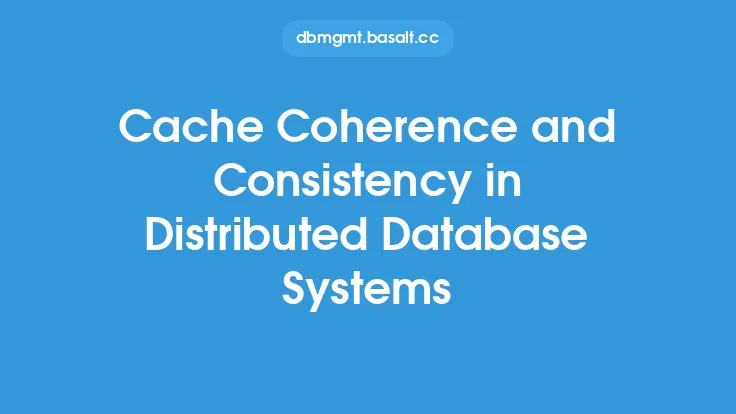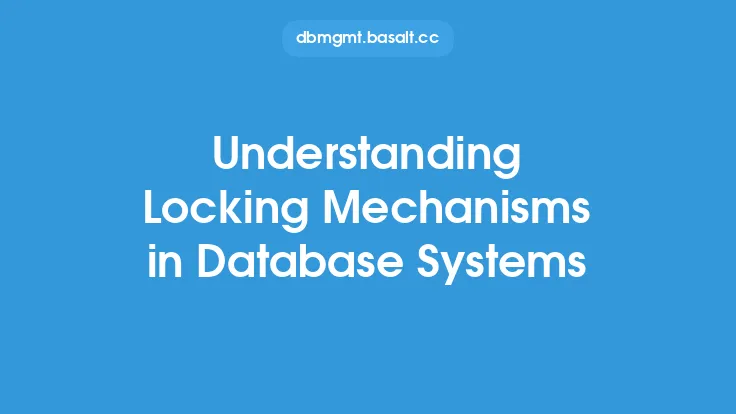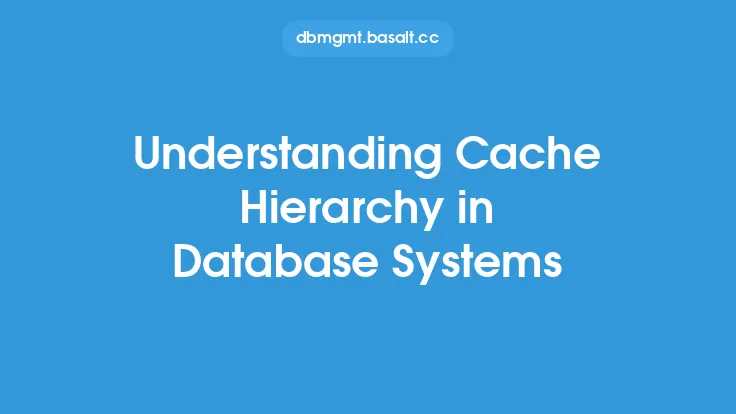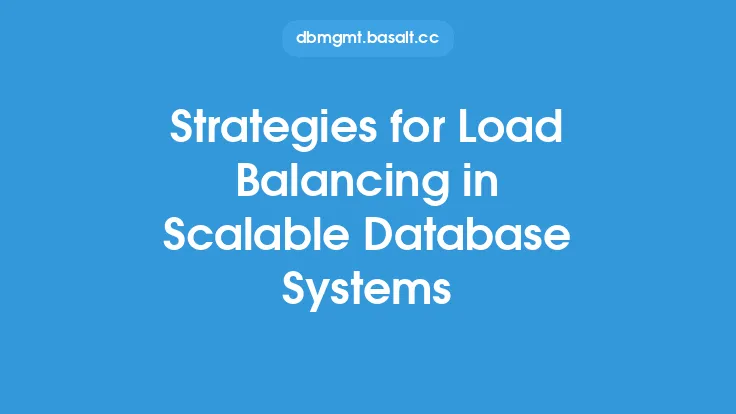Distributed locking is a crucial aspect of database systems, particularly in environments where multiple nodes or instances need to access shared resources simultaneously. In a distributed database system, locking mechanisms are used to synchronize access to shared data, ensuring data consistency and preventing conflicts between concurrent transactions. However, distributed locking poses significant challenges that can impact the performance, scalability, and reliability of the database system.
Introduction to Distributed Locking
Distributed locking refers to the process of coordinating access to shared resources in a distributed system, where multiple nodes or instances may request access to the same resource simultaneously. In a distributed database system, locking mechanisms are used to ensure that only one node or instance can modify a particular resource at a time, preventing conflicts and ensuring data consistency. Distributed locking can be achieved through various mechanisms, including distributed lock managers, lease-based locking, and consensus protocols.
Challenges of Distributed Locking
Distributed locking poses several challenges that can impact the performance, scalability, and reliability of the database system. One of the primary challenges is the increased latency associated with distributed locking. Since locking requests need to be propagated across the network, the latency of locking and unlocking operations can be significantly higher than in centralized systems. This increased latency can lead to slower transaction processing times, reduced throughput, and decreased system responsiveness.
Another challenge of distributed locking is the risk of deadlocks. In a distributed system, deadlocks can occur when two or more nodes or instances are blocked, waiting for each other to release a resource. Deadlocks can be particularly problematic in distributed systems, as they can lead to significant performance degradation and even system crashes. To mitigate the risk of deadlocks, distributed locking mechanisms often employ timeout mechanisms, deadlock detection algorithms, and lock ordering strategies.
Distributed Locking Mechanisms
Several distributed locking mechanisms have been proposed to address the challenges of distributed locking. One popular approach is the use of distributed lock managers, which are responsible for coordinating access to shared resources across the distributed system. Distributed lock managers can be implemented using various algorithms, including centralized locking, distributed locking, and hierarchical locking.
Another approach is the use of lease-based locking, which allows nodes or instances to acquire a lease on a resource for a specified period. Lease-based locking can help reduce the risk of deadlocks and improve system responsiveness, as nodes or instances can continue to operate even if a lease expires. However, lease-based locking requires careful configuration and management to ensure that leases are properly renewed and released.
Consensus protocols, such as Paxos and Raft, are also used in distributed locking mechanisms. These protocols ensure that all nodes or instances in the distributed system agree on the state of the shared resource, preventing conflicts and ensuring data consistency. Consensus protocols can be particularly useful in distributed systems, as they provide a high degree of fault tolerance and availability.
Impact of Distributed Locking on Database Performance
Distributed locking can have a significant impact on database performance, particularly in terms of throughput, latency, and concurrency. The use of distributed locking mechanisms can introduce additional overhead, including network communication, lock acquisition, and lock release. This overhead can lead to reduced throughput, increased latency, and decreased system responsiveness.
To mitigate the impact of distributed locking on database performance, several strategies can be employed. One approach is to use fine-grained locking, which allows multiple nodes or instances to access different parts of the shared resource simultaneously. Fine-grained locking can help reduce contention and improve concurrency, leading to improved system performance.
Another approach is to use lock escalation, which allows nodes or instances to acquire a coarser-grained lock on a resource if a finer-grained lock is not available. Lock escalation can help reduce contention and improve system performance, but it requires careful configuration and management to ensure that locks are properly escalated and released.
Best Practices for Distributed Locking
To ensure effective distributed locking, several best practices can be employed. One best practice is to use a consistent locking strategy across the distributed system, ensuring that all nodes or instances use the same locking mechanism and configuration. Consistent locking strategies can help reduce contention, improve concurrency, and ensure data consistency.
Another best practice is to monitor and analyze locking performance, identifying bottlenecks and areas for improvement. Monitoring and analysis can help optimize locking configurations, reduce contention, and improve system performance.
Finally, it is essential to consider the trade-offs between consistency, availability, and performance when designing and implementing distributed locking mechanisms. Distributed locking mechanisms can provide a high degree of consistency and availability, but they may introduce additional overhead and reduce system performance. By carefully evaluating these trade-offs, database administrators and developers can design and implement effective distributed locking mechanisms that meet the needs of their distributed database system.
Conclusion
Distributed locking is a critical aspect of database systems, particularly in environments where multiple nodes or instances need to access shared resources simultaneously. While distributed locking poses significant challenges, including increased latency, risk of deadlocks, and overhead, several mechanisms and strategies can be employed to mitigate these challenges. By understanding the challenges and mechanisms of distributed locking, database administrators and developers can design and implement effective distributed locking mechanisms that ensure data consistency, prevent conflicts, and improve system performance.





